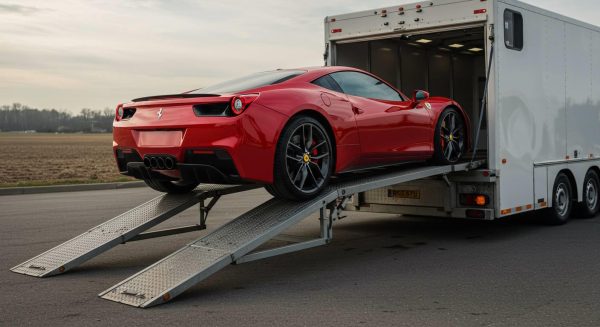The recovery of high-value vehicles requires specialist knowledge, equipment, and processes to ensure safe handling and transportation of luxury cars, supercars, and other premium vehicles when they break down or are involved in collisions. High-value vehicles typically include prestige marques, classic cars, supercars, and limited-edition models, where values can range from tens of thousands to millions of pounds. While HGVs can also be high-value, this article deals with light vehicles.
Professional recovery operators handling high-value vehicles must meet stringent legal requirements under UK legislation. As defined in the Road Vehicles (Construction and Use) Regulations 1986, recovery vehicles must be “constructed or permanently adapted primarily for any one or more of the purposes of lifting, towing, and transporting a disabled vehicle.”
Specialist Equipment
High-value vehicle recovery typically requires enclosed transportation rather than traditional open recovery vehicles. This provides protection from weather and road debris while maintaining discretion; the vehicle in question may have been driven by a celebrity, and avoiding attention by journalists and souvenir hunters is important. The latest enclosed recovery trucks feature air-ride suspension systems to minimise vibration and movement during transit. They are equipped with extended, shallow-angle aluminium ramps and winching systems specifically designed to accommodate vehicles with low ground clearance—a common feature of high-performance and luxury cars.

Training and Certification
Recovery operators handling high-value vehicles must be appropriately qualified. While basic recovery only requires a standard driving licence, operators dealing with heavier vehicles over 3,500 kg must hold the relevant vocational licence categories. Additionally, as noted in the DVLA’s guidance on special types of vehicles, operators using vehicles under the Special Types General Order need specific training in securing and transporting high-value loads.
Insurance and Documentation
High-value vehicle insurance is critical for recovery operators. Standard recovery insurance policies often have upper limits that may be insufficient for premium vehicles. Specialist high-value vehicle insurance is therefore essential, typically providing coverage into the millions of pounds per vehicle. Recovery operators must carry appropriate documentation, including insurance certificates and, where required under the Road Traffic Act 1988, operator licensing. They must also be able to demonstrate proper risk assessment and method statements for recovering different vehicle types.
Special Considerations
Extra care must be taken when recovering vehicles with carbon fibre components, special aerodynamic features, or other delicate materials. Recovery technicians need detailed knowledge of manufacturers’ lifting and towing points to avoid causing damage. Some luxury and performance car manufacturers provide specific guidance on recovery procedures for their vehicles.
While emergency roadside assistance remains important, many high-value vehicle recoveries are pre-planned, allowing time for proper assessment and selection of appropriate equipment and techniques. This methodical approach helps ensure these valuable assets are transported safely and securely.
The role requires not just technical competence but also discretion and professionalism when dealing with high-net-worth clients and their prized vehicles. As the UK’s luxury and supercar market continues to grow, specialist high-value vehicle recovery services play an increasingly important role in supporting this sector of the automotive industry.

